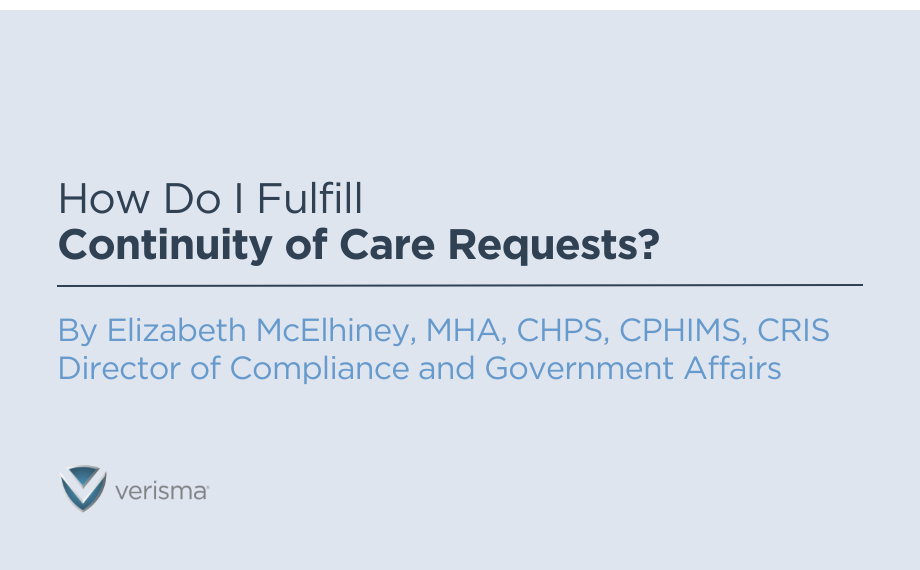
Celebrating Autism Awareness Month and Its Impact on Patient Privacy
By Elizabeth McElhiney, MHA, CHPS, CPHIMS, CDH-L, CRIS, CC
Director of Government Affairs and Policy
Verisma
April 30, 2025
This post does not include a link to a speaking engagement or webinar. It is something rather personal. So, I am going to just dive in.
I am autistic, which some may know, and the end of this Autism Awareness month has made me unusually reflective. While I have brought it up during conversations, presentations and roundtables I have not gone out of my way to be vocal about my diagnosis.
Part of it is because I was not officially diagnosed until after I was 40.
I am also frequently told I do not look autistic, to which I want to say you have probably not spent enough time with me and I have had a lot of practice masking it.
In addition, there are real, potential consequences to disclosing my diagnosis. There is still a lot of misinformation about autism. Even if you are disclosing to someone you trust, you never remove the fear you will always have that asterisk after your name.
There is good reason for that fear. Autistic adults may be reluctant to apply to be foster parents because they’re afraid they won’t be accepted. We are also less likely to be believed by some healthcare providers, which can contribute to the average autistic lifespan being two decades less than the American average.
But I have learned not being authentically myself only hurts me, mentally and physically. For instance, I have had actual chest pain but that is a story for another post.
It is in this spirit that I am sharing my story. I think the more autistic people are open about their diagnosis, the better the community will understand the autism spectrum. There is not a typical autistic person, and we all deserve respect and support.
I also think it demystifies autism. I know there are more people out there who have not been diagnosed or were diagnosed later in life. I was told I could not be autistic because I had been in a relationship for 15+ years and could make eye contact. Being diagnosed a decade ago would have saved so much stress.
Finally, autism has reframed my understanding of how policymakers and health information professionals should approach patient privacy. Before my diagnosis, I thought I had a solid understanding of what privacy meant to an individual. It was not until my diagnosis, I truly understood why parents or patients may not share their complete medical history with providers … and the consequences, right or wrong, of disclosing a diagnosis.
There is a saying in the autism advocacy community: “Nothing about us without us.”
I love this motto.
I believe a health information professional’s job is to protect patients, autistic or not, and educate them on their right to disclose protected health information. Patients should be given this information in an understandable format and allowed to decide what, when, and to whom information is disclosed.
I suppose it is fitting HIP Week overlaps with Autism Awareness Month. All patients, particularly those in vulnerable populations, need to feel they control their health information, and it is securely kept. Health information professionals are uniquely positioned to advocate for patients and families. Belonging to both groups has emphasized the critical role my peers play in ensuring a patient’s trust. My hope is more health information professionals will feel comfortable and empowered to leverage experiences to move beyond daily work and examine how they can help patients understand privacy rights.






